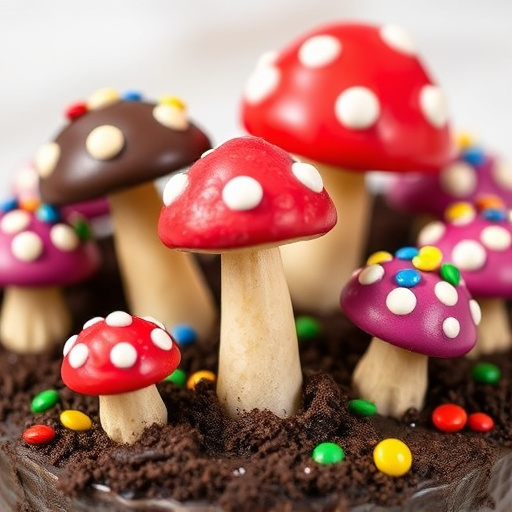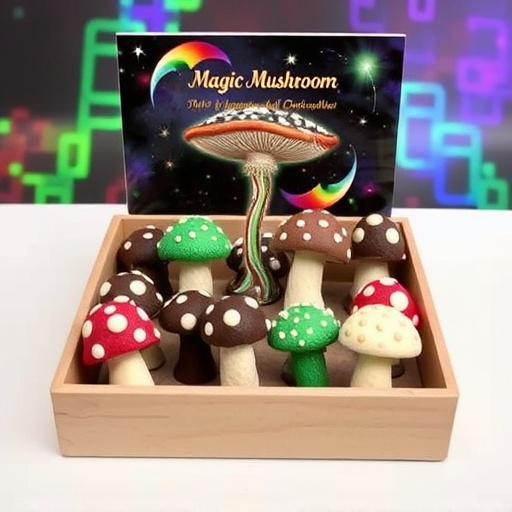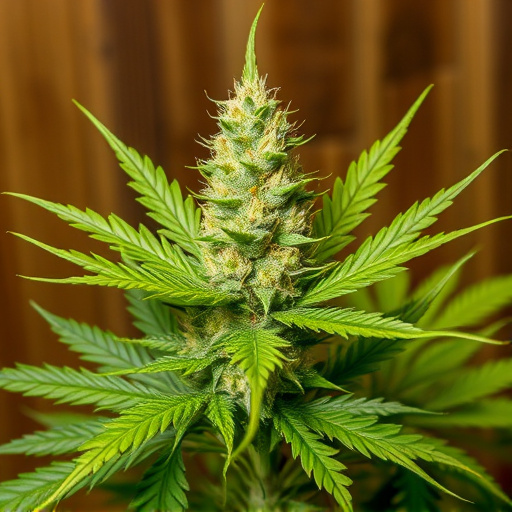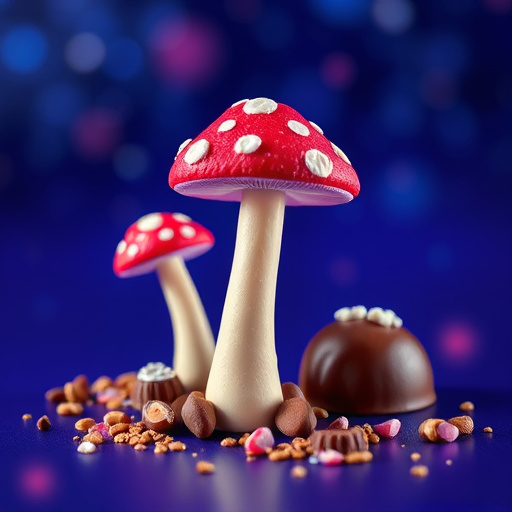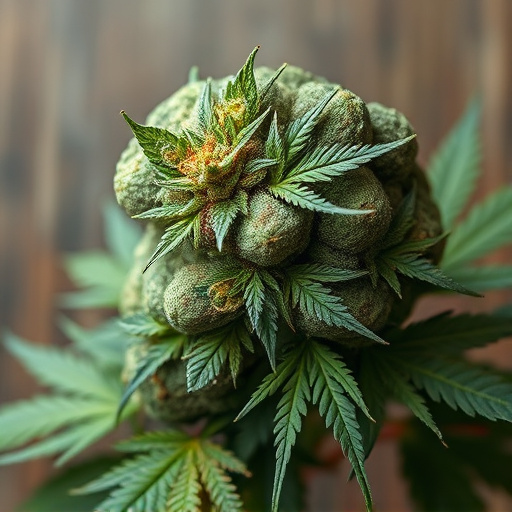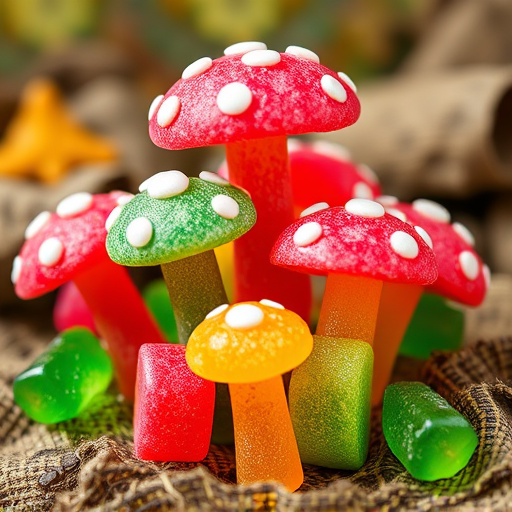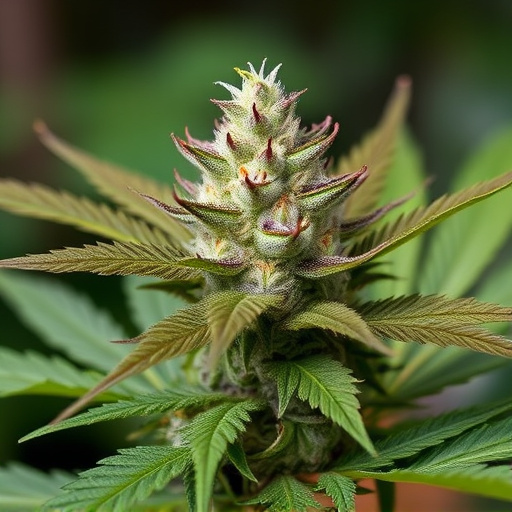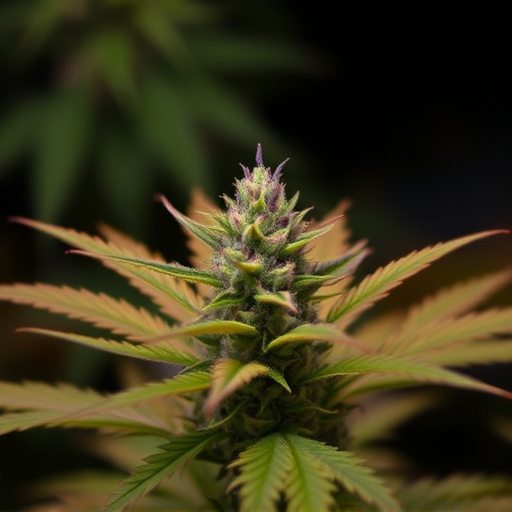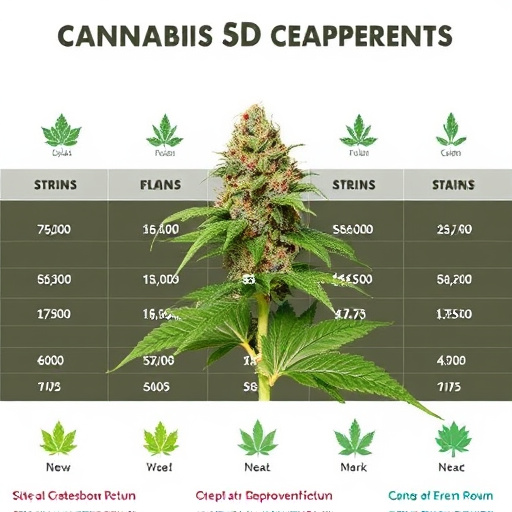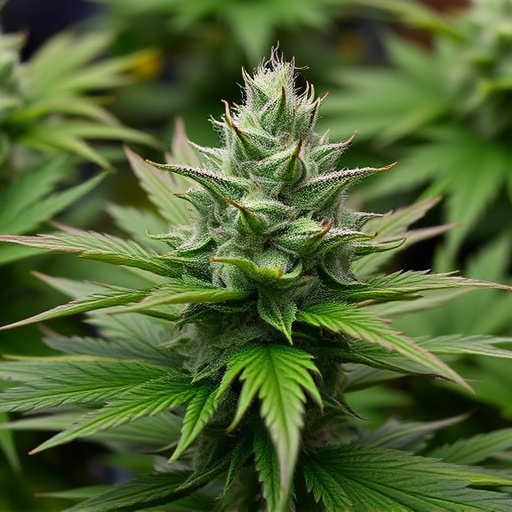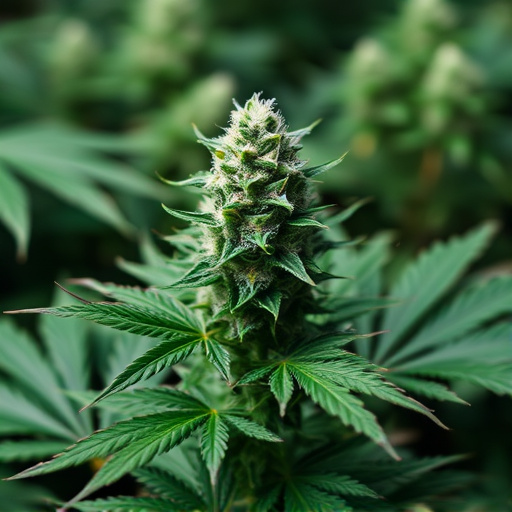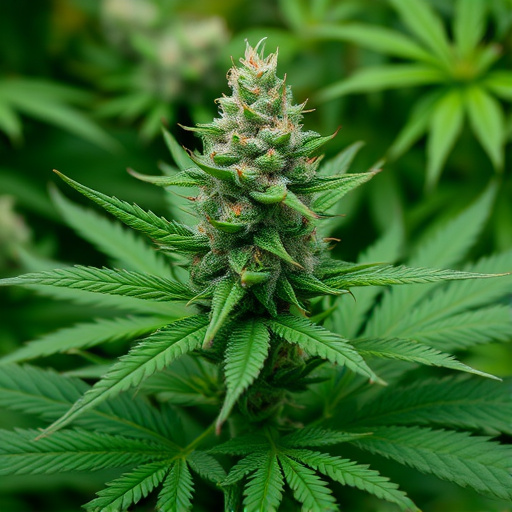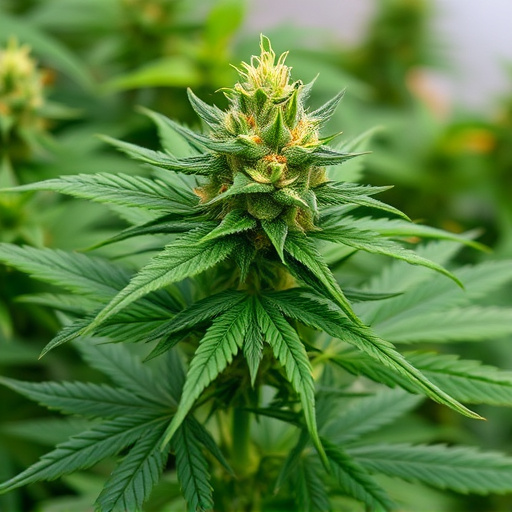Cannabis chemistry, driven by cannabinoids like THC and CBD, along with terpenes, creates a diverse range of experiences and effects. While THC induces psychoactive properties, CBD offers therapeutic benefits without intoxication. Terpenes modulate cannabinoid activity, contributing to unique scents, flavors, and effects. Genetic mutations and hybridization are key to creating varied cannabis strains, many prized for their vibrant colors like purple, red, or blue, sought after by medical users, especially those with PTSD, due to potential therapeutic benefits. Environmental factors such as soil composition and climate conditions also significantly impact these colors, with certain nutrient levels and temperatures enhancing pigment production. Hybridization increases genetic diversity, allowing for specialized strains tailored to specific medical needs, including PTSD relief.
Uncover the enchanting mysteries behind the vibrant hues of purple, red, and blue cannabis strains. In this article, we explore the captivating world of cannabis chemistry, delving into the roles of cannabinoids and terpenes that contribute to these unique colors. Discover how genetic mutations and hybridization play a pivotal role in creating distinct varieties. Additionally, understand the environmental factors that shape the final appearance, from soil composition to climate, offering insights for those seeking cannabis strains for PTSD relief with specific aesthetic characteristics.
- Understanding Cannabis Chemistry: The Role of Cannabinoids and Terpenes
- Genetic Mutations and Hybridization: Creating Purple, Red, and Blue Varieties
- Environmental Factors: How Soil, Climate, and Growth Conditions Impact Color
Understanding Cannabis Chemistry: The Role of Cannabinoids and Terpenes
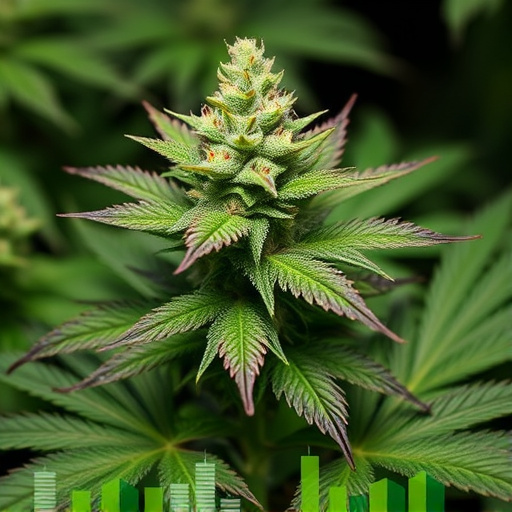
Cannabis chemistry is a complex world that plays a significant role in the unique characteristics and effects of different strains, including those with potential therapeutic benefits for conditions like PTSD. At the heart of this chemistry are cannabinoids and terpenes, which work together to create the diverse range of experiences associated with various cannabis strains.
Cannabinoids, such as THC (tetrahydrocannabinol) and CBD (cannabidiol), are responsible for many of the well-known effects of cannabis. THC is known for its psychoactive properties, inducing feelings of euphoria and relaxation. In contrast, CBD has gained popularity for its potential therapeutic benefits without the intoxicating effects. Terpenes, on the other hand, are aromatic compounds that contribute to the distinct scent and flavor profiles of different strains. They can also modulate the effects of cannabinoids, enhancing or altering their interaction with the body’s endocannabinoid system. This intricate interplay between cannabinoids and terpenes results in a wide spectrum of cannabis strains with varying levels of potency and specific attributes tailored to address diverse needs, including those seeking cannabis for PTSD relief.
Genetic Mutations and Hybridization: Creating Purple, Red, and Blue Varieties
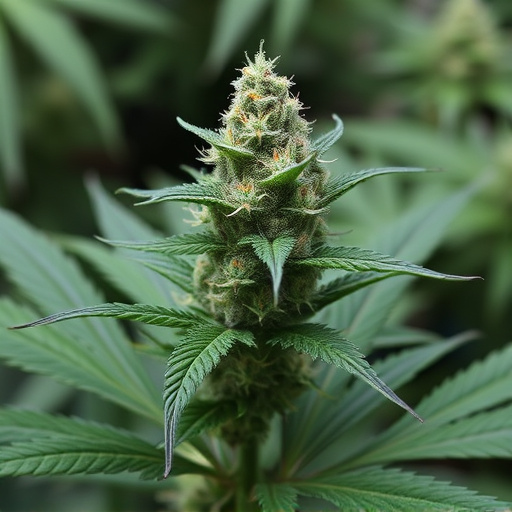
Genetic mutations and hybridization play a significant role in the creation of unique cannabis strains, including those with vibrant purple, red, or blue hues. These visual variations are often sought after by medical users, particularly those looking for cannabis strains for PTSD treatment due to their potential therapeutic benefits.
Through selective breeding and genetic manipulation, growers can introduce specific traits into the plant’s DNA, leading to desirable characteristics such as enhanced flavors, higher CBD content, and unique colors. Genetic mutations can cause changes in pigment production, resulting in shades of purple, red, or blue. Hybridization involves crossing different cannabis varieties to create new strains, combining desirable traits from each parent while increasing genetic diversity. This process allows for the development of specialized cannabis strains tailored to specific medical needs, including those associated with PTSD.
Environmental Factors: How Soil, Climate, and Growth Conditions Impact Color
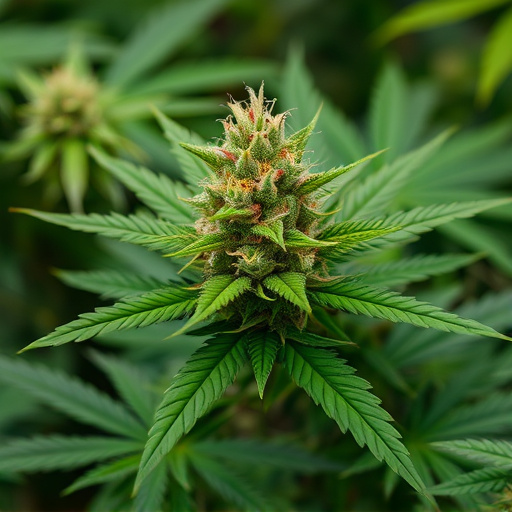
Environmental factors play a significant role in determining the vibrant colors exhibited by cannabis plants, including those with purple, red, and blue hues often sought after for their therapeutic benefits, such as cannabis strains for PTSD. Soil composition is a crucial element; certain nutrients like nitrogen, phosphorus, and potassium, as well as trace minerals, can influence pigment production. For instance, higher levels of boron can promote anthocyanin synthesis, leading to deeper reds and purples.
Climate conditions also contribute to color variations. Different temperatures and sunlight exposure affect the plant’s metabolic processes. Cooler temperatures and limited sunlight often result in more intense colors as the plant directs its energy towards pigment production. This is especially relevant for outdoor-grown cannabis, where natural fluctuations create diverse growing environments, ultimately shaping the spectrum of colors observed in these therapeutic strains.
In the intricate world of cannabis chemistry, the vibrant colors of purple, red, and blue in certain strains aren’t merely aesthetic; they’re a result of complex interactions between genetic mutations, hybridization, and environmental factors. Understanding these elements can help cultivate specific cannabis strains for PTSD and other conditions, offering unique therapeutic properties tailored to individual needs. By exploring the interplay of cannabinoids, terpenes, and growth conditions, cultivators can create diverse options to support mental health and well-being.
